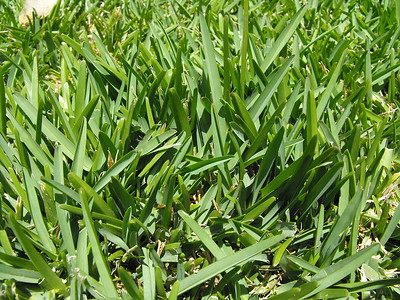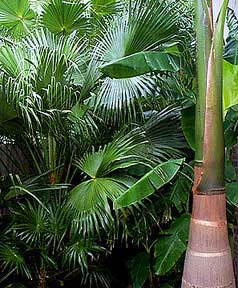Living in a subtropical climate means embracing warm temperatures, regular rainfall, and high humidity for most of the year. This unique climate type doesn’t only affect our wardrobes and lifestyles, but it also has a profound impact on our gardens.
The challenge of maintaining a vibrant, healthy lawn in subtropical climates is one many homeowners and gardeners face. With intense heat, varying rainfall, and a host of pests and diseases, choosing the right type of grass is key to ensuring your lawn thrives.
The type of lawn you choose can affect not only its appearance but also its maintenance needs and resistance to climate-specific challenges.
This guide will delve into the world of subtropical lawn selection, providing you with a detailed understanding of the best types of grasses suited for this climate. It will also discuss their individual soil and watering needs, how the subtropical climate impacts their health, maintenance tips, and common challenges faced in caring for these lawns.
Let’s dive in and start our journey to the perfect subtropical lawn!
Understanding Subtropical Grasses
Different types of grasses are suitable for different climates. While some grasses excel in cooler regions, others are better suited to the heat and humidity of the subtropics. Here, we will explore some common types of grass ideal for subtropical climates.
1. St. Augustine Grass: This is a popular choice for lawns in subtropical regions due to its high heat tolerance and ability to thrive in a variety of soil types. St. Augustine grass is known for its broad, flat blades and dark green color.
2. Bermuda Grass: An excellent choice for high-traffic areas, Bermuda grass is known for its durability and resilience. It loves full sun and can withstand heat well. Its fine, short blades create a dense turf that’s resistant to most pests and diseases.
3. Zoysia Grass: Zoysia grass is prized for its lush, carpet-like appearance. It’s tolerant to a wide range of conditions – from shade to sun, and from salty soils to drought, making it a versatile option for subtropical homeowners.
4. Bahia Grass: If you have sandy soil in your lawn, Bahia grass might be an excellent fit. It’s extremely drought-tolerant and does well in less than ideal soil, which can be an advantage in some areas.
5. Centipede Grass: Known for its low maintenance needs, Centipede grass is perfect for homeowners who want a nice looking lawn without a lot of work. It has a unique, light green color and prefers slightly acidic soils.
While this is only a general outline, of the types of grasses you can choose, hopefully it will be enough to start you on your journey of makinig an informed decision.
Characteristics of Subtropical Grasses
Each grass type suited for subtropical climates comes with its unique set of characteristics, soil requirements, watering needs, and resilience against pests, diseases, and climatic variations. Let’s explore these aspects for each of the grasses we’ve discussed.
1. St. Augustine Grass
– Description and visual characteristics: St. Augustine grass has broad, flat blades and a dark green color that gives your lawn a lush, thick appearance.
– Preferred soil conditions: It thrives in a variety of soil types but prefers well-drained, fertile soil.
– Watering needs: It needs regular watering to maintain its vibrant color, particularly in the dry season.
– Resilience: It has a high heat tolerance but is susceptible to certain pests, such as chinch bugs, and fungal diseases.
2. Bermuda Grass
– Description and visual characteristics: Bermuda grass is characterized by its fine, short blades that form a dense, mat-like surface. Its color ranges from a medium to dark green.
– Preferred soil conditions: It grows best in well-drained sandy or loamy soil.
– Watering needs: It’s drought-resistant and can survive with less water, but for a lush appearance, regular watering is beneficial.
– Resilience: Bermuda grass is resilient to heavy foot traffic and most pests and diseases.
3. Zoysia Grass
– Description and visual characteristics: Known for its thick, carpet-like turf, Zoysia has fine to medium textured blades and a rich green color.
– Preferred soil conditions: Zoysia is flexible, capable of growing in both sandy and clay soils, and it can tolerate salty conditions.
– Watering needs: Zoysia needs regular watering, especially in dry conditions, but can withstand periods of drought.
– Resilience: It is somewhat resistant to pests and diseases but can develop thatch if not properly managed.
4. Bahia Grass
– Description and visual characteristics: Bahia grass has a coarse texture and light green color. It doesn’t create as dense a lawn as some other grass types.
– Preferred soil conditions: It’s excellent for sandy and less fertile soils.
– Watering needs: Bahia is extremely drought-tolerant and can survive with minimal watering.
– Resilience: It’s resistant to pests and diseases but not as tolerant to heavy foot traffic.
5. Centipede Grass
– Description and visual characteristics: Centipede grass is recognized by its light green color and medium to coarse texture.
– Preferred soil conditions: It grows best in acidic soils with good drainage.
– Watering needs: It requires moderate watering. Overwatering can lead to issues like fungal disease.
– Resilience: Centipede grass is fairly resistant to pests but can struggle with certain diseases, especially in poorly drained soils.
Understanding these characteristics can help you decide which grass is the best fit for your lawn’s specific conditions and your personal maintenance preferences.
Choosing the Right Grass for Your Lawn
Now that we have a good understanding of the different grasses suited for subtropical climates, it’s time to figure out which one is right for your lawn.
Here are a few things to consider:
1. Soil Type of Your Lawn: Take a good look at your soil. Is it sandy, clayey, or loamy? Different grasses have different soil preferences. For instance, Bahia grass does well in sandy and less fertile soils, while Centipede grass prefers acidic soils.
2. Amount of Sunlight the Lawn Receives: The amount of sunlight your lawn receives is another critical factor. Bermuda grass, for example, loves full sun and would be an excellent choice for a sunny lawn. In contrast, Zoysia grass is more shade-tolerant and can be a good option for lawns with partial shade.
3. Expected Lawn Usage: How do you plan to use your lawn? Is it mainly for aesthetic purposes, or will it be subjected to heavy foot traffic from children or pets? Bermuda grass is highly resilient and can handle a lot of activity, making it a great choice for families. On the other hand, if your lawn is mainly for show, a grass type like Zoysia or St. Augustine, which creates a lush, beautiful turf, might be more appropriate.
Considering the above list can help you make a good decision on the best grass variety for you lawn, making sure it looks great and thrives under your specific conditions.
Maintenance Tips for Subtropical Lawns
Once you’ve selected the right grass for your lawn, proper care and maintenance are essential to keep it healthy and looking its best.
Here are some tips specific to subtropical lawn care:
1. Watering Recommendations: Even though subtropical grasses are generally heat-tolerant, they still need adequate water, especially during the drier months. A good rule of thumb is to water your lawn deeply but infrequently, about one to one and a half inches of water per week. It’s better to water early in the morning to reduce evaporation.
2. Fertilization Needs and Schedule: Fertilizing your lawn provides necessary nutrients that might be lacking in the soil. Most subtropical grasses should be fertilized in late spring or early summer when they start actively growing. Be sure to choose a fertilizer that matches the specific needs of your grass and soil type.
3. Mowing Practices: Regular mowing helps to maintain a neat appearance and promotes denser growth. Each grass type has an ideal mowing height that should be maintained. Never remove more than one-third of the grass blade at a time to avoid stressing the grass.
4. Pest and Disease Control: Regular inspection of your lawn for signs of pests and disease can help catch any problems early before they cause significant damage. If you identify an issue, consult with a local extension service or a lawn care professional for advice on treatment.
Remember, every lawn is unique, and these guidelines may need to be adjusted based on your specific circumstances.
Common Challenges in Subtropical Lawn Care and Solutions
Taking care of a lawn in subtropical climates comes with its unique set of challenges. Here are some common issues you may encounter and practical solutions to overcome them:
1. Fungus and Disease: High humidity and heat can create a breeding ground for various lawn diseases and fungal infections. Regularly inspect your lawn for signs of disease, such as yellowing or wilting patches. Solutions include adjusting watering to avoid overly wet conditions, ensuring good drainage, or using fungicides.
2. Pests: Pests like chinch bugs, mole crickets, or grub worms can damage your lawn. Look out for irregular brown patches or areas where the grass seems loose at the roots. Pest control methods may include introducing beneficial insects, using pest-specific insecticides, or consulting with a lawn care professional.
3. Drought Stress: Despite being adapted for hot conditions, subtropical grasses can still suffer from drought stress during extended dry periods. Signs include a bluish-gray tint to the grass, wilting, or footprints that remain visible. To mitigate, water deeply but infrequently to encourage deep root growth, and consider mulching to conserve moisture.
4. Weed Control: Weeds can invade your lawn and compete with your grass for nutrients. Regular mowing can help prevent weeds from going to seed and spreading. In case of persistent weed problems, consider using a selective herbicide or hand-weeding.
5. Soil Compaction: Soil can become compacted over time, especially in high-traffic areas, making it hard for water and nutrients to reach the grass roots. If your lawn feels hard or water tends to pool on the surface, you may have compacted soil. Lawn aeration, which involves creating small holes in the soil, can help alleviate this problem.
By understanding these common challenges, you can better care for your lawn and keep it healthy and vibrant even in the challenging subtropical climate.
Conclusion
Taking care of a lawn in a subtropical climate can be both a rewarding and challenging endeavor. With the right grass selection tailored to your specific lawn conditions and diligent maintenance, it’s entirely possible to cultivate a lawn that not only survives but thrives in the subtropical climate.
We’ve explored various types of grasses suitable for subtropical climates – St. Augustine, Bermuda, Zoysia, Bahia, and Centipede – and delved into their specific characteristics, soil preferences, watering needs, and resilience factors. Remember, the right grass for your lawn depends on various factors, including soil type, sunlight exposure, and your lawn’s intended usage.
Regular maintenance, including appropriate watering, fertilizing, mowing, and pest control, can ensure your lawn stays lush and healthy. Moreover, being aware of common challenges like fungal diseases, pests, drought stress, weed control, and soil compaction can help you tackle problems proactively and keep your lawn in top condition.
Remember, every lawn is unique, and these guidelines can be adjusted to suit your specific circumstances. With the information in this guide, you’re now well-equipped to make informed decisions for your lawn’s health and well-being. Here’s to your lush, vibrant subtropical lawn!
Additional Resources
Books:
1. The Lawn Bible: How to Keep It Green, Groomed, and Growing Every Season of the Year by David R. Mellor
2. Southern Lawns: A Step-by-Step Guide to the Perfect Lawn by Chris Hastings
University Extension Services:
1. University of Florida IFAS Extension: Lawn and Garden – [https://sfyl.ifas.ufl.edu/lawn-and-garden/]
2. Texas A&M AgriLife Extension: Lawn & Garden – [https://agrilifeextension.tamu.edu/assets/plants-crops/lawn-garden/]
Societies and Organizations:
1. National Association of Landscape Professionals (NALP) – [https://www.landscapeprofessionals.org/]
2. The Turfgrass Producers International (TPI) – [https://www.turfgrasssod.org/]
3. The International Society of Arboriculture (ISA) – [https://www.isa-arbor.com/]




